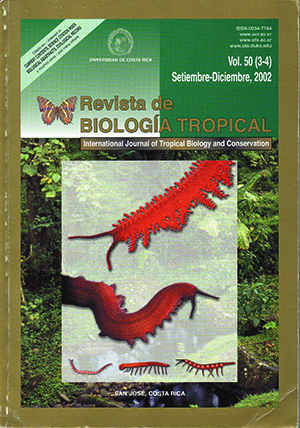Abstract
In northwestern Costa Rica, cattle are being used as a “management tool” to reduce the amount of combustible material, mainly dominated by Hyparrhenia rufa, an African grass. This project is being developed within Parque Nacional Palo Verde and Reserva Biológica Lomas Barbudal, both of which form part of the only remaining tropical dry forests in Mesoamerica. To determine the short-term effects of cattle grazing on the natural vegetation, we compared the floristic composition within Palo Verde in an area under intermittent cattle grazing with an area that has not been grazed. There were significantly fewer plant species in the area with intermittent cattle grazing compared to the area with no grazing. Floristic composition of these two habitats was different as reflected by both Fisher ’s alpha values and the Shannon index of diversity, both of which were significantly higher in the ungrazed site. The ungrazed area contained more plant species and was more similar to mature forest. The structure of the vegetation was significantly different between the intermittently grazed and ungrazed sites with more small stems (1-5 cm dbh) and fewer large stems (>5 cm dbh) in the intermittently grazed habitat. These results indicate that cattle grazing has an impact on the dry forest by reducing the relative abundance and density of larger tree species and by changing the species composition and structure of the com - munity. The current management plan implemented in Palo Verde and Lomas Barbudal is not appropriate because of the impact that cattle have on the structure of the natural vegetation and should not be considered a viable alternative in other protected areas of dry forest in the Neotropics. We suggest that alternative fire prevention measures be evaluated including hand-cutting H. rufa, the creation of more frequent and larger fire breaks, and the development of green breaks.##plugins.facebook.comentarios##

This work is licensed under a Creative Commons Attribution 4.0 International License.
Copyright (c) 2002 Revista de Biología Tropical
Downloads
Download data is not yet available.


